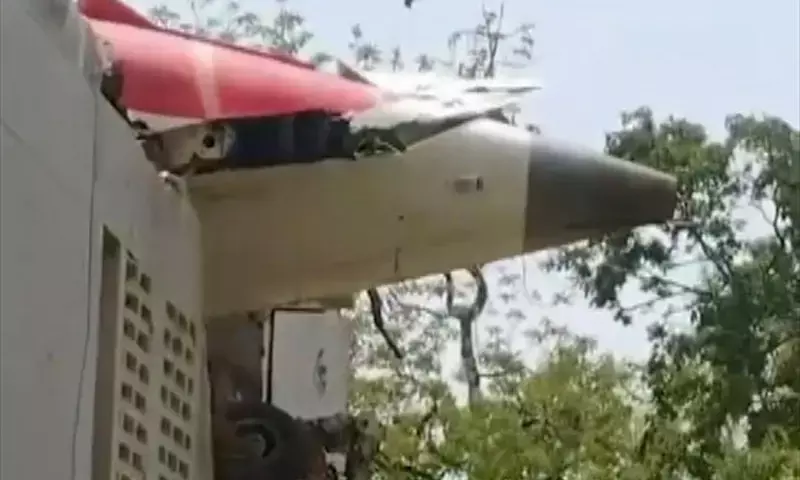A Disaster Beyond Belief
Questions that need answers

The Air India Ahmedabad-London flight went down minutes after take off. And seconds after the pilot’s MayDay call. It went down like a rock, killing all passengers —except the one miraculous survivor on seat 11A—on the spot. And carrying with it the deaths of several medical interns, as it crashed on their hostel just when most of them were in the mess for lunch. Bodies are still being recovered so the final count is still awaited. Meanwhile Air India’s only public statement has been wrenched out of its bureaucracy where it admits that its flight was “involved in an accident.”
Meanwhile speculation abounds, with aviation experts noting a major malfunction in the ability of the Boeing’s Dreamliner that is supposedly one of the safest aircraft in the world, to rise beyond the 640 odd feet it reached after take off. It struggled then and horrific visuals traced the flight as it lost ground and then crashed into the building in a densely populated area and burst into a ball of flame. Bodies were recovered charred beyond recognition from the site. And just when news that all aboard - 242 passengers and crew (figures still vary)– were dead one man got up intact, walked out of the aircraft or what remained of it and could be seen in a badly shot video trying to tell the crowd around the site that he had come from inside the plane, and was a passenger. He is now in hospital, an Indian origin British national whose family is waiting for him in London.
International investigators have reached the spot. And the process of answering the overwhelming Why and How has begun. The aircraft had carried passengers from Delhi to Ahmedabad on the domestic circuit in the morning. It was flagged off with a green signal by the ground crew that must have tested the aircraft as is the norm before each and every flight takes off. The pilot also carries out all the tests before clearing the aircraft and moving out from the tarmac. These are two essentials, and yet neither detected any fault that developed the magnitude, within minutes, to bring down the entire flight and its passengers. Questions are begging for answers, and the investigation is expected to lay bare the details of the reasons for this terrible crash where both engines failed simultaneously.
Unfortunately for hours after the crash the site was not cordoned off, and crowds had free access. Even the passenger who had a miraculous escape was on his own, surrounded by the crowds even as he walked or rather hobbled to safety. No one entrusted with security noticed him.
Meanwhile the government and the Ministry of Civil Aviation should pull up its socks, and instead of absolving itself of blame, hold itself accountable. That is the only way it will run its own parallel investigation into the entire maintenance network across the country that is crucial to the airworthiness of the aircraft. The fast expansion of fleets, the privatisation have been major issues flagged by civil aviation experts over the years. The poor capacity of airports to deal with the increasing number of aircraft, and shortage of good runaways is one aspect of it. But the maintenance of the fleets is another, which is behind the public eye but most crucial to safety. It is imperative for the authorities to ensure that all safety norms are followed, that no short cuts are being taken, that there are adequate skilled personnel on the job across the country, and facilities for the upkeep of the aircraft are modern and up to date.
Air India has come out from bad bouts of political exploitation over the years by different governments, which have really crippled the airline. From free tickets, and free upgrades, to political appointments at all levels to government negligence, turned it from what was conceived as an efficient airline into an inefficient, non-responsive national carrier. The Maharaja disappeared from view, and more recently the airline was privatised and handed over to the Tatas. Vistara, that was donejune 13 well particularly as a domestic carrier, was merged into Air India that is reportedly on the recoup route – both in terms of efficiency and finances. The crash has snatched away this veneer and laid bare the almost jinxed carrier to questions that will determine its future in real terms.
The Citizen condoles the death of the innocent passengers, crew and medical interns in a tragedy that could have been avoidable. The best tribute to them will be a thorough, independent, professional investigation into the accident followed by immediate action to make those responsible accountable, and correct the faultlines and gaps identified. This will have to be made public and not buried in the files of aviation history.



